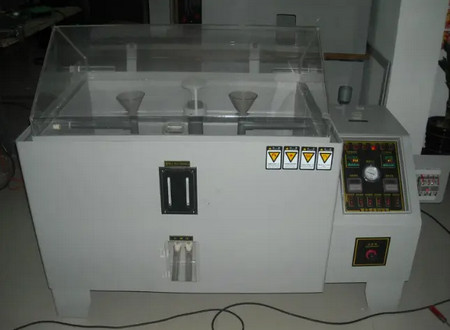- Qinsun Instruments Co., Ltd.
- Tell:+86-21-6780 0179
- Phone:+86-17740808215
- Address:No. 2578 Minhang District Gu Dai Road, Shanghai
- Contact:Mr. Li
- QQ:846490659
What is ASTM B117 salt spray test?

ASTM B117 is a standard for salt spray corrosion testing issued by the American Society for Testing and Materials (ASTM). It is widely used to evaluate the corrosion resistance of metals and coating materials. The salt spray test is a test method that simulates the corrosion of metals and coatings in marine climate environments and can evaluate the durability of materials in harsh environments.
ASTM B117 salt spray test is designed to simulate the corrosion of metal and coating materials by seawater by exposing samples to salt spray environments. This test method helps evaluate the corrosion resistance of materials in order to predict the corrosion conditions that materials may encounter in actual use and improve product quality and reliability.
The following are the basic principles and operating procedures of ASTM B117 salt spray test for reference:
principle
The basic principle of the salt spray test is to expose the sample to a salt spray environment to accelerate the corrosion process of metal and coating materials by simulating the fog, dew and moisture containing salt. During the test, the sample is exposed to the salt spray environment for a specific period of time. During this process, the corrosion on the surface of the sample is observed and recorded to evaluate the corrosion resistance of the material.
Operating procedures
1. Prepare the sample: Prepare the sample to be tested. The sample is usually a thin slice of material or a coated film. According to the ASTM B117 standard, determine the size and quantity of the sample to ensure that the sample preparation meets the requirements of the test standard.
2. Set test conditions: According to the ASTM B117 standard, set the relevant parameters of the salt spray test, including test time, temperature, salt spray concentration, etc. The setting of these parameters should conform to the usage environment and usage requirements of the specific product.
3. Install the sample: Install the sample in the testing equipment to ensure that the exposed area of the sample meets the requirements of the standard. The installation position of the sample should be such that the salt spray can fully cover the sample surface.
4. Start the test: start the salt spray test equipment and let the equipment generate a salt spray environment. As the test proceeds, the control system of the equipment continues to maintain the stability of the salt spray environment to ensure that the test conditions continue to meet the requirements of the standard.

5. Monitoring test: During the test process, regularly observe the surface state of the sample and record changes in corrosion, oxidation, etc. According to the requirements of the standard, regular observations and records are carried out for final analysis and evaluation.
6. End of test: According to the requirements of the standard, after the test time is over, stop the testing equipment and remove the sample. Clean and inspect the surface of the sample, and record the degree of corrosion and other relevant data. Based on the test results, the corrosion status of the sample is evaluated and a test report is generated.
ASTM B117 salt spray test is very important for evaluating the corrosion resistance of metals and coating materials. It can help manufacturers and developers predict the service life and performance of materials in harsh environments, guide material selection and product design, and improve Product quality and reliability.





